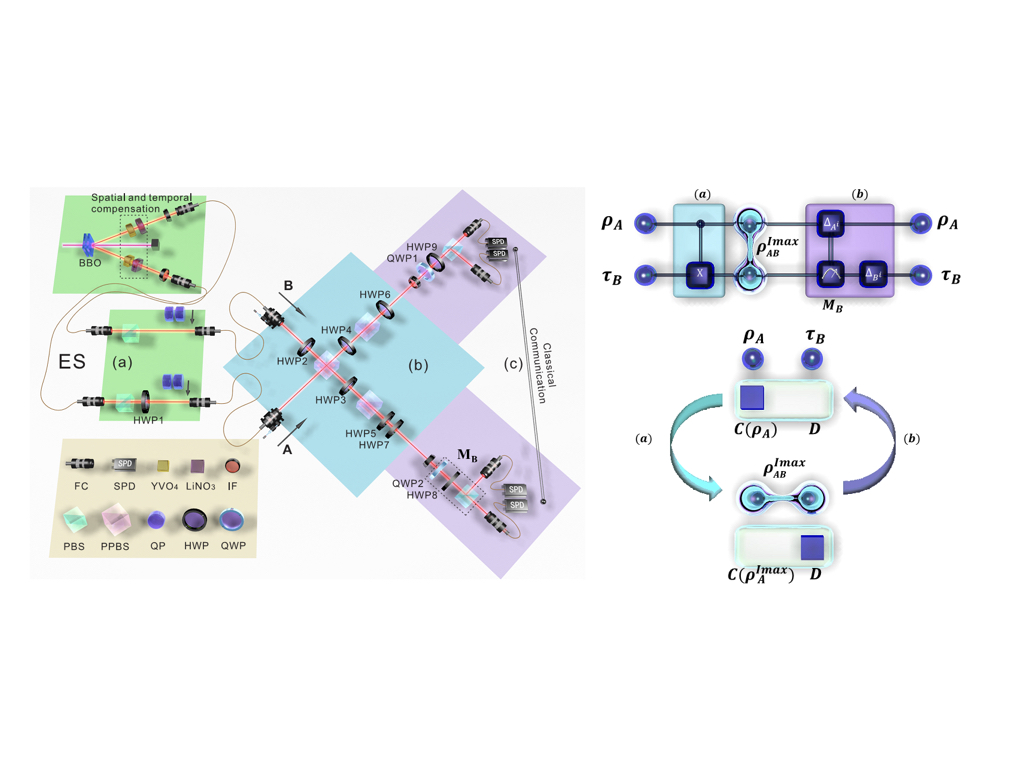The CAS key lab of quantum information made a significant progress in the field of experimental quantum optics. Under the lead of Prof. GUO Guangcan, Prof. LI Chuanfeng, Prof. XIANG Guoyong and collaborators introduced a circuit for cyclic inter-conversion between two different quantum resource, coherence and discord (a kind of quantum correlations). These results were published by Physical Review Letters on 2nd August.
In quantum science, there is continuing interest in isolating resources that quantify features of non-classicality, and thus underly advantaged quantum information processing. Recently there has been growing evidence that in certain settings different resources can be interconverted, allowing us to consume local non-classicality to create quantum correlations with an ancillary system and vice versa. They can provide ways of validating potential new resources in the context of more established resource theories, and inspire fresh perspectives on how such resources can lead to practical advantage.
Prof. XIANG Guoyong from USTC, Prof. Mile Gu from Nanyang Technological University and their collaborators from Peking University and Tsinghua University leverage these ideas by designing a quantum circuit that cyclically inter-converts between coherence and discord and implement it using discrete photonics. The first half cycle experimentally realizes a recently proposed protocol for converting coherence to discord [Phys. Rev. Lett. 116, 160407 (2016)], where coherence on one input system is converted to discordant correlations between it and a suitable ancilla. The second adapts theoretical and experimental techniques in coherence distillation and steering [Phys. Rev. Lett. 116, 070402 (2016), Optica 4 , 454 (2017)], whereby we restore coherence in the original input system via measurement of the correlated ancilla. And they test the cyclic inter-conversion for both pure and mixed inputs. From the experimental results, we find that the vast majority of the coherence (86%) is converted into discord (blue squares) in the first stage of conversion. And in the second stage of the experiment, they restores the coherence of system A by measurement of B, where we retrieve most of the coherence originally in A (around 80%, see red triangles).

Fig Theoretical proposed circuit and experimental set up
The work is strongly praised by the referees, writing, “The theoretical contribution is an important milestone, as essentially all future work on both quantum coherence and discord needs to now compare their results with the other subfield ”.
The first author of this work is Graduate student WU Kangda. The corresponding authors are Prof. XIANG guoyong and Prof. GU mile. This work is supported by National Natural Science Foundation of China, the National Key R & D Program, China Postdoctoral Science Foundation, the National Research Foundation of Singapore and in particular NRF Award.
(Edited by LYU Jinghao, USTC News Center)